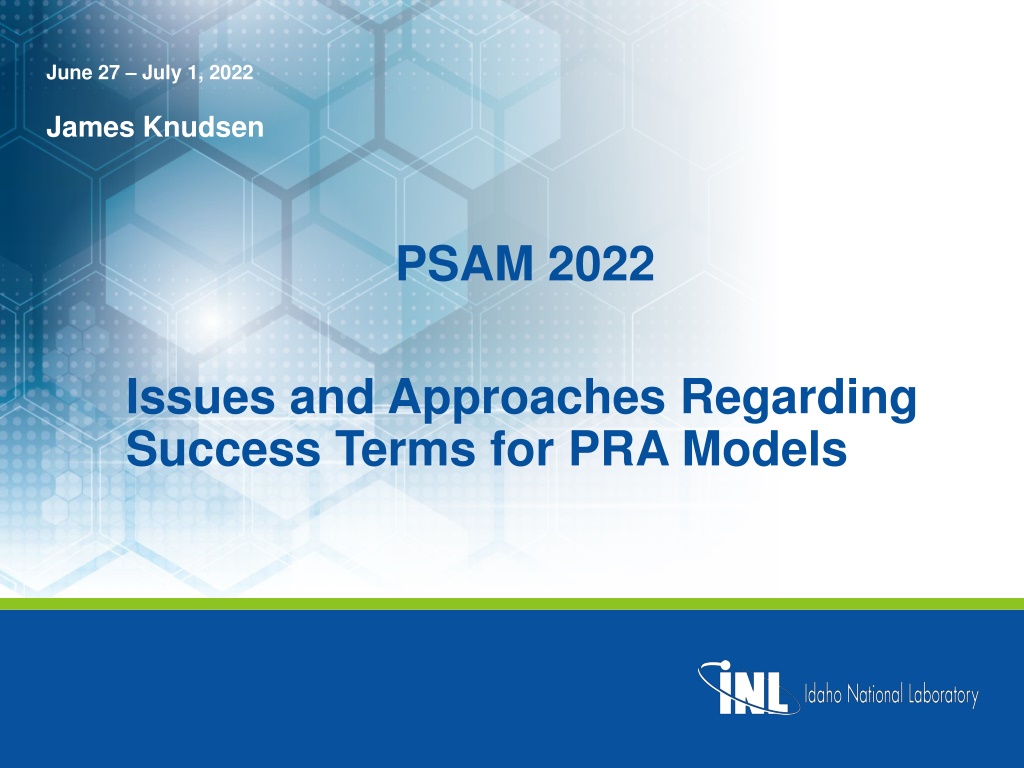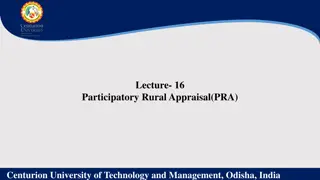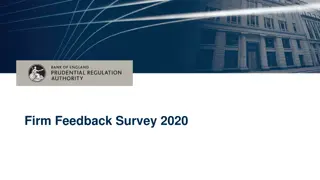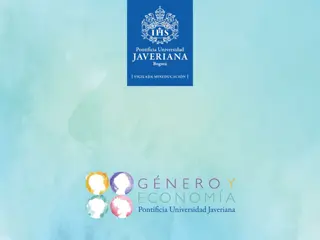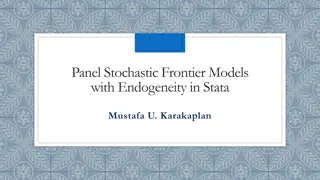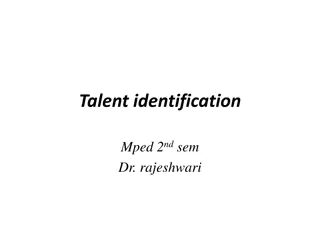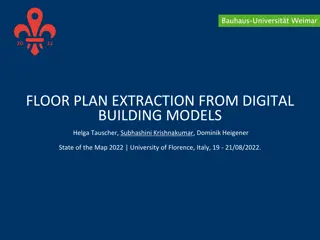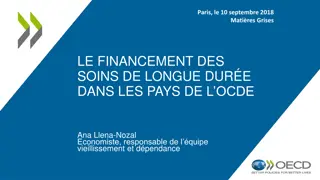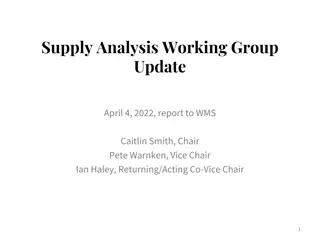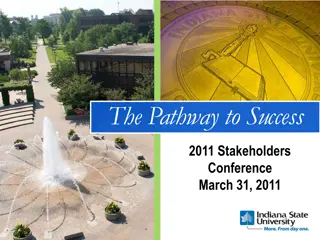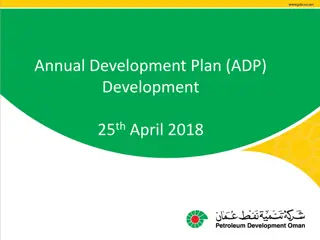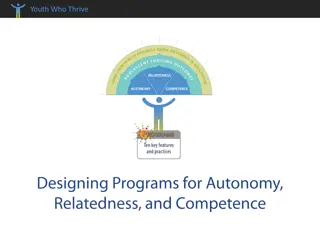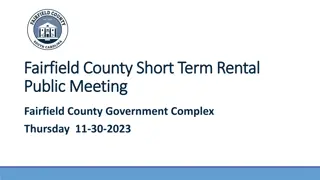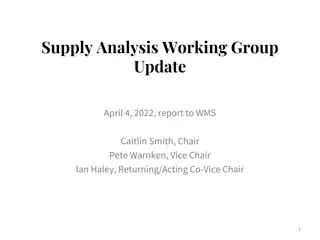Challenges in Success Term Process for PRA Models at PSAM 2022
PSAM 2022 discussed the motivation, objectives, and current practices related to the Success Term Process in Probabilistic Risk Assessment (PRA) models. The complexity of PRA models has grown due to the inclusion of external events, leading to challenges in sequence quantification and overestimation. The aim is to develop a process that properly accounts for high probability events, reduces overestimation, and integrates seamlessly with existing analysis tools.
Download Presentation

Please find below an Image/Link to download the presentation.
The content on the website is provided AS IS for your information and personal use only. It may not be sold, licensed, or shared on other websites without obtaining consent from the author. Download presentation by click this link. If you encounter any issues during the download, it is possible that the publisher has removed the file from their server.
E N D
Presentation Transcript
June 27 July 1, 2022 James Knudsen PSAM 2022 Issues and Approaches Regarding Success Terms for PRA Models
PSAM 2022 Success Term Process Discussion Points Motivation of Success Term Process Objective of Success Term Process Current State-of-Practice Quantification Pros and Cons of the Current State-of-Practice Proposed Quantification Approach Pros and Cons of the Proposed Quantification Approach Results from Application of Success Term Process Conclusion 2
PSAM 2022 Success Term Process Motivation of Success Term Process Complexity of Probabilistic Risk Assessment (PRA) models has increased over the past several years Internal event sequence quantification was understood to be slightly overestimated, but reasonable Majority of components random failure probabilities are small, i.e., <5.0E-2 Inclusion of external events caused issues in sequence quantification Seismic PRAs Include high failure probabilities, i.e., >1.0E-1 When possible, success probabilities are accounted for, creating non-coherent cut sets Fire PRAs Inclusion of spurious operation, human error probabilities, etc. 3
PSAM 2022 Success Term Process Motivation of Success Term Process (cont.) Inclusion of external events along with internal events cause an overestimation of PRA frequency results This overestimation of the overall PRA frequency results can be substantial depending upon complexity of modeling This overestimation caused the research of different processes to sequence quantification 4
PSAM 2022 Success Term Process Objective of Success Term Process Develop a process to properly account for high probability events in sequence quantification Reduce the overestimation of current state-of-practice quantification Eliminate work arounds to obtain reasonable overall results Force success events into sequence cut sets Gather cut sets into end states Be able to incorporate into existing analysis tools/approaches with minimal disruption 5
PSAM 2022 Success Term Process Current State-of-Practice Quantification Most PRA models use a linked fault tree approach Fault trees contain shared dependencies Accident sequences are mutually exclusive A simple summation of the sequences to obtain overall frequency Event tree (ET) nodes are usually binary and should sum to 1.0 External event PRAs have high component failure probabilities, which defy the 1.0 binary split if not properly accounted This issue is the driver to the overestimation 6
PSAM 2022 Success Term Process Current State-of-Practice Quantification (cont.) Accident sequence cut sets are developed by creating two fault trees; failed fault tree and success fault tree Sequence 2 will be expanded for illustration 7
PSAM 2022 Success Term Process Current State-of-Practice Quantification (cont.) The failed and success fault trees for sequence 2 are SEQUENCE 2 SUCCESS LOGIC SEQUENCE 2 FAILED LOGIC SEQ2-SUCCEED SEQ2-FAILED T1 External T4 External T2 External 8
PSAM 2022 Success Term Process Current State-of-Practice Quantification (cont.) The failed and success fault trees shown on previous slide are solved to obtain minimal cut sets The failed cut sets are compared to the success cut sets Cut sets in the failed set are removed if they show up in the success set This is called Delete Term process Example: Failed Cut Sets BE-C * BE-F + BE-B * BE-F + BE-D Cut set BE-C * BE-F in failed set will be removed based on the fact for the sequence to occur BE-C has to succeed Success Cut Sets BE-A + BE-C 9
PSAM 2022 Success Term Process Current State-of-Practice Quantification (cont.) Given the process of accident sequence cut set generation, the current practice is to attempt to properly account for the success probability of ET nodes (top event fault trees) This approach can only be used if: Fault trees containing high probability components should only have 1 or 2 component basic events Fault trees are independent of the other fault trees within the ET accident sequence Cut sets are generated and quantified using minimal cut set upperbound approximation (Mincut) for each sequence Overall frequency result is then obtained by summing the result for all the accident sequences 10
PSAM 2022 Success Term Process Current State-of-Practice Quantification (cont.) Often sequence cut sets are grouped into a single end state, reduced to just minimal cut sets for that group, and then quantified. This process typically results in a lower value since the success branch sequences do not explicitly include basic event success terms which can then result in few cut sets to be quantified. 11
PSAM 2022 Success Term Process Pros and Cons of the Current State-of-Practice Quantification Pros Mincut approximation provides reasonable results given some independent high probability events are included Note: Binary Decision Diagram (BDD) quantification method provides a better estimate of the actual result than the mincut approximation Sensitivities studies are straightforward Level 2 analysis can be performed if cut sets are not gathered into an end state Cons Multiple complement basic events show up in cut sets, which can cause issues with Mincut approximation requiring BDD quantification Not being able to account for all high probability events due to complexity of fault trees and potential dependencies 12
PSAM 2022 Success Term Process Proposed Quantification Approach Develop accident sequence specific success term recovery basic event to be applied to the sequence cut sets Two different methods to develop success term recovery basic event Method 1 Use a NOR gate to generate success term cut sets and quantify those cut sets to obtain a success term value Method 2 Use an OR gate to generate failure term cut sets, quantify those cut sets, and then subtract that value from 1.0 to obtain a success term value 13
PSAM 2022 Success Term Process Proposed Quantification Approach (cont.) The success fault trees for both approaches Method 1 NOR Gate Method 2 OR Gate SEQUENCE 2 SUCCESS LOGIC NOR GATE SEQUENCE 2 SUCCESS LOGIC SEQ2-SUC-FT-NOR SEQ2-SUC-FT-OR T1 External T1 External T2 External T2 External 14
PSAM 2022 Success Term Process Proposed Quantification Approach (cont.) The success fault trees shown on the previous slide are solved to obtain minimal cut sets The cut sets from the NOR gate of Method 1 represent success, therefore this probability can be used directly for the sequence success term recovery event The cut sets from the OR gate of Method 2 represent failure, so this probability needs to be subtracted from 1.0 to be used as the sequence success term recovery event Fault Trees Cut Sets MinCut BDD Sequence Success Term Recovery Method 1 Success NOR /BE-A * /BE-B * /BE-C + /BE-A * /BE-C * /BE-D * /BE-E 5.01E-01 4.151E-01 5.007E-1 or 4.150E-1 5.941E-01 Method 2 Success OR BE-A + BE-C + BE-B * BE-E + BE-B * BE-D 5.85E-01 1 - Pr(x) 1-5.94E-1 = 4.06E-1 1-5.85E-1 = 4.15E-1 15
PSAM 2022 Success Term Process Proposed Quantification Approach (cont.) The quantified sequence specific success term recovery event is then ANDed to all cut sets within that sequence This process produces a more accurate result for each individual sequence than the current state-of-practice process All the success events, including complex ET nodes (fault trees) that have high probability events, are incorporated into final sequence cut sets This proposed quantification process provides a better estimate of the overall frequency since success terms that are typically ignored since they are assumed to be very close to a value of 1.0 are include in the quantification process 16
PSAM 2022 Success Term Process Pros and Cons of Proposed Quantification Approach Pros Both methods calculate a better estimate of the overall frequency versus the current state-of-practice quantification since success events are factored into the results Method 2 is more straightforward in terms of quicker cut set generation and quantification Both methods allow for direct Level 2 evaluation and sensitivity studies Cons More quantification time than current-state-of-practice due to extra logic, cut set generation, and quantification to obtain sequence success term recovery event value to be applied to sequence cut sets Numerical round-off issues when probabilities are close to 1.0, i.e., 0.99999 17
PSAM 2022 Success Term Process Results from Application of Success Term Process Success term process was applied to detailed seismic PRA The following is a generic seismic event tree that is used to solve 6 specific seismic bins Each seismic bin calculates a conditional probability of component failure and uses bin specific frequency SEISMIC EVENT IN BIN 4 (0.75 - 1.0g) OCCURS (BIN PGA 0.87) MAJOR STRUCTURE FAILURE- DIRECT CD FROM SEISMIC EVENT LLOCA DUE TO SEISMIC EVENT - BIN 4 SMALL LOCA DUE TO SEISMIC EVENT - BIN 4 LOSS OF OFF-SITE POWER FROM SEISMIC EVENT IN BIN 4 # End State (Phase - ) Comments (Phase - ) IE-EQ-BIN4 CD-EQ4-FT LLOCA-EQ4-FT SLOCA-EQ4-FT LOOP-EQ4-FT 1 TRANS RX-TRIP 2 LOOPWR 3 SLOCA SLOCA 4 SLOCA SLOCA-LOOP 5 LLOCA LLOCA 6 LLOCA LLOCA-LOOP 7 CD DIRECT-CD 18
PSAM 2022 Success Term Process Results from Application of Success Term Process (cont.) The table below compares results of the current state-of- practice versus the proposed Method 2 success term process The proposed success term process has results that are ~20% lower Current State of Practice Proposed Process Event Tree Description MinCut 1.13E-09/yr BDD MinCut 1.12E-09/yr BDD EQK-BIN1 Seismic Bin 1 (0.17g) 1.11E-09/yr 1.10E-09/yr EQK-BIN2 Seismic Bin 2 (0.39g) 2.21E-07/yr 2.12E-07/yr 2.19E-07/yr 2.09E-07/yr EQK-BIN3 Seismic Bin 3 (0.61g) 2.29E-06/yr 1.83E-06/yr 2.23E-06/yr 1.78E-06/yr EQK-BIN4 Seismic Bin 4 (0.87g) 2.83E-06/yr 1.71E-06/yr 1.08E-06/yr 5.86E-07/yr EQK-BIN5 Seismic Bin 5 (1.22g) 2.34E-06/yr 1.25E-06/yr 2.32E-06/yr 1.23E-06/yr EQK-BIN6 Total Seismic Bin 6 (2.12g) 5.99E-07/yr 8.28E-06/yr 2.28E-07/yr 5.23E-06/yr 5.97E-07/yr 6.44E-06/yr 2.28E-07/yr 4.03E-06/yr 19
PSAM 2022 Success Term Process Conclusion Issues with current state-of-practice quantification where success terms are not currently being addressed were presented Inability to account for high probability events due to ET node (fault tree) complexity Overestimation of results due to improper handing of ET node binary splits as success terms not explicitly included 20
PSAM 2022 Success Term Process Conclusion (cont.) Two methods were proposed to better estimate individual sequence and overall frequency results Proposed sequence specific success term recovery better reflects logic and reduces overestimation of individual sequence and overall results Software modifications will be needed, but logic elements already exist High performance desktops and servers can minimize the additional time to more accurately quantify individual sequences and overall results 21
PSAM 2022 Success Term Process Questions 22
